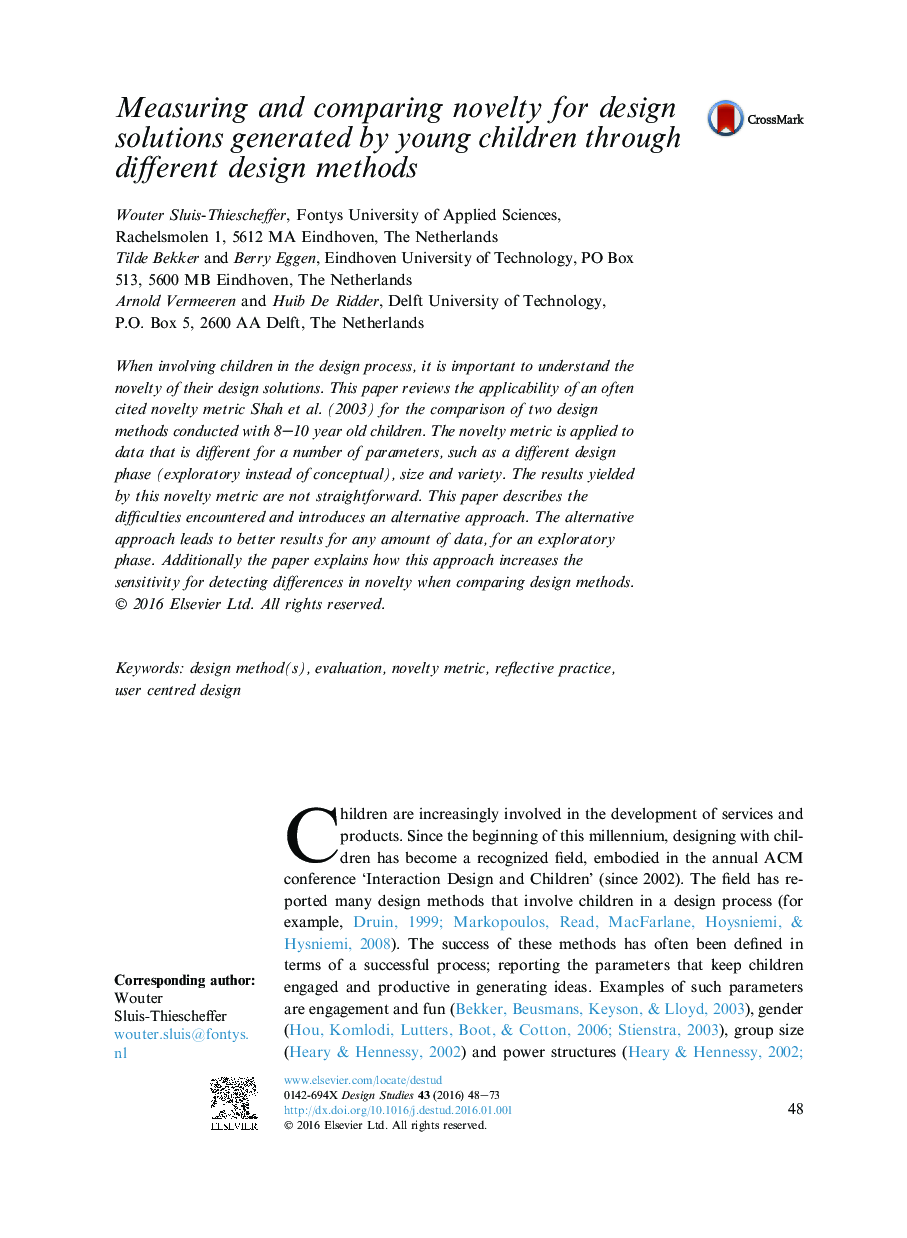| Article ID | Journal | Published Year | Pages | File Type |
|---|---|---|---|---|
| 261459 | Design Studies | 2016 | 26 Pages |
•This paper aims to find design value in involving children in a design process.•The study compares children's brainstorming and prototyping output for novelty.•The often used novelty metric by Shah et al. (2003) yields challenging results.•We propose an alternative measure based on percentiles; simpler and more sensitive.•The most novel ideas are generated by children when prototyping follows brainstorming.
When involving children in the design process, it is important to understand the novelty of their design solutions. This paper reviews the applicability of an often cited novelty metric Shah et al. (2003) for the comparison of two design methods conducted with 8–10 year old children. The novelty metric is applied to data that is different for a number of parameters, such as a different design phase (exploratory instead of conceptual), size and variety. The results yielded by this novelty metric are not straightforward. This paper describes the difficulties encountered and introduces an alternative approach. The alternative approach leads to better results for any amount of data, for an exploratory phase. Additionally the paper explains how this approach increases the sensitivity for detecting differences in novelty when comparing design methods.
